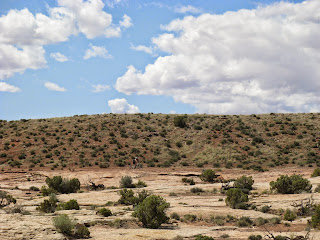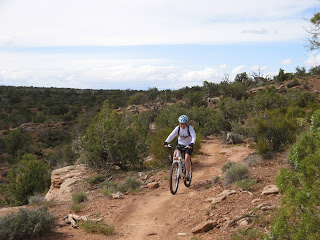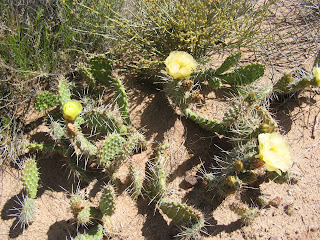Fancy sign at the trail head
The hike we came up with for Saturday was up Porter Fork in Millcreek Canyon to the Porter Fork West Pass. This was a brand new hike for us so we didn't know what to expect. (In addition, we seem to have skimmed over just how much elevation we were in for when reading the description.) The trail head is just below the Terraces trail head, about 4.4 miles up the canyon road. The first 1.5 miles is on a narrow, paved, gated driveway that goes up past a number of wonderful cabins perched on the banks of a beautiful spring-fed creek. Note that I said it "goes up" because it did, steeply, right from the start.
Western clematis climbing a tree
When the paved road ended, we kept going up, into the Mount Olympus Wilderness area, on an old mining road. I felt badly for the mules who must have worked for the miners because that old road was quite steep. We had it to ourselves, however, and whenever the road turned away from the creek, the silence was wonderful. We passed through both evergreen forests and aspen stands, continuously climbing, until we reached a fork in the trail.
Looking back across Millcreek Canyon from old mine
At this point, we were walking on snow - although this trail is not all that high in elevation, the heavily-wooded Porter Fork faces north and thus holds onto its snow for a long time - and old footprints went both ways. We went right first, whereupon the "trail" dead-ended at the ruins of an old mine. We backtracked then and went to the left, but we still had to get out the map since the trail was completely covered with several feet of old snow. We figured out where we needed to go and started up a steep snow-filled gully which came out at a wider meadow.
Post-holing = not my favorite
After a quick snack, we kept going up the meadow, this time following old snowshoe tracks. The snow was pretty deep here and before long we were post-holing, sinking up to or past our knees and skinning our shins on the snow crystals. Our slim hiking poles were all but useless - even before one of H's snapped in half. About halfway up the meadow, H notices that some slabs of snow were shifting when he stepped down; there was about eight inches of the newest snow from last week on top of very old snow, and we immediately started worrying about setting off an avalanche. But we were SO close to the top that we didn't want to turn back now, so we moved over and kept going up through the trees. I was really struggling here since we were breaking trail ourselves instead of following those snowshoe tracks; a couple of times I post-holed up to my hips and having to pull our legs all the way up and out of that is tiring. Plus it was really, really steep and with the snow covering the trail (which our book said was switchbacked), we were just going straight up.
View of the Salt Lake Valley from the pass
With one last push up that steep meadow, we came out on top of Porter Fork West Pass, at the junction of the Desolation Trail. There, on the other side of the ridge, facing south, there was absolutely no snow. We paused for a bit to refuel with some homemade beef jerky, but our feet were completely soaked and we didn't want to linger long enough to get chilled.
H heads down, following the snowshoe tracks
Our descent was much, much faster, especially in the snow. It wasn't the right consistency for glissading but we could take long steps and slide a little bit; since it was soft underfoot, it was gentle on our knees - even though our shins got scraped up pretty well. We kept cruising when we got off the snow as well, our sodden boots squishing down the trail surprisingly quickly for how steep it was.
OMG a flat spot!
We started seeing a few people as we got further down but Porter Fork is not a heavily used trail, which is nice for the folks who own cabins up there. We're pretty sure that the reason it isn't more popular is because it's so damn steep. When we got back to the car and had changed out of our wet boots, we pulled out the GPS: we had gained nearly 3,200 feet in just under four miles - that last stretch, from the fork in the trail to the ridge, gained about 1,000 feet in .8 miles, so no wonder it felt like we were going straight up! As we drank our post-hike beers, we marveled at the hike statistics ... and worried about how well our legs would recover.
Hike stats: 7.89 miles RT; 4:17 hours total, 3:17 hours moving; 2.4 m.p.h. moving average; 3,171 feet climbed UP.
























































